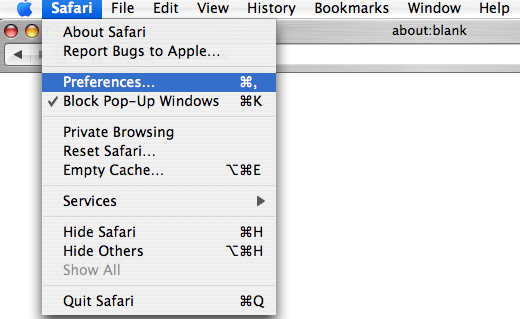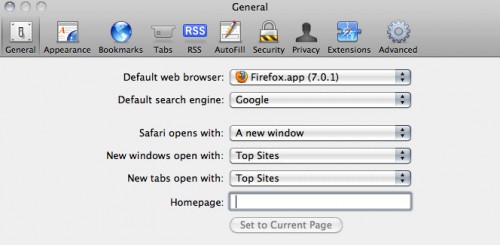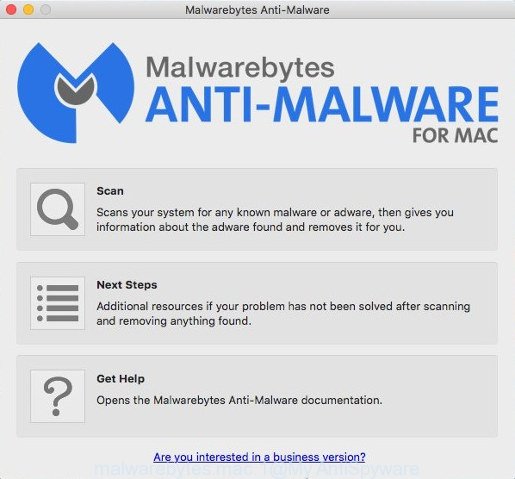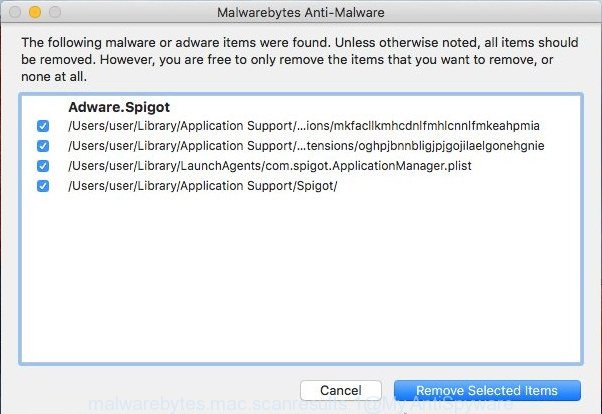According to security researchers, PersonalSearch is an adware program. What does Adware mean? Adware is a type of invasive software — which can affect Apple Macs — occasionally redirect your web-browser to certain web-sites so the owners of those sites can earn money by showing advertisements to visitors. It’s not a good idea to have installed adware software. The reason for this is simple, it doing things you do not know about. And of course you completely don’t know what will happen when you click on any the advertisements.

Unwanted ads
Does adware steal your personal information? Adware software is able to gather lots of personal data that can be later transferred to third parties. You do not know if your home address, account names and passwords are safe.
How does PersonalSearch get on your MAC
In many cases adware software gets onto MAC system by being attached to various free applications, as a bonus. Therefore it’s very important at the stage of installing software downloaded from the Web carefully review the Terms of use and the License agreement, as well as to always choose the Advanced, Custom or Manual install mode. In this mode, you can turn off all third-party web browser addons, which will be added along with the desired program.
Threat Summary
| Name | PersonalSearch, Personal Search 1.0 app |
| Type | adware, PUP (potentially unwanted program), pop up virus, pop up advertisements, pop ups |
| Symptoms |
|
| Removal | PersonalSearch removal guide |
How to Remove PersonalSearch (removal steps)
As with uninstalling adware, malware or potentially unwanted software, there are few steps you may do. We recommend trying them all. If you do only one part of the guidance, then it should be use malicious software removal tool, because it should remove adware software and block any further infection. But to completely get rid of PersonalSearch adware you will have to at least reset your internet browser settings such as new tab page, search engine by default and home page to default state, uninstall all unwanted and suspicious software, and get rid of adware by malicious software removal utilities. Certain of the steps below will require you to close this webpage. So, please read the step-by-step guidance carefully, after that bookmark it or open it on your smartphone for later reference.
To remove PersonalSearch, complete the steps below:
- How to remove PersonalSearch adware software without any software
- Automatic Removal of PersonalSearch adware
- How to stay safe online
- Finish words
How to remove PersonalSearch adware software without any software
In this section of the blog post, we have posted the steps that will help to get rid of PersonalSearch adware manually. Although compared to removal tools, this method loses in time, but you don’t need to download anything on the MAC. It will be enough for you to follow the detailed tutorial with images. We tried to describe each step in detail, but if you realized that you might not be able to figure it out, or simply do not want to change the MS Windows and web browser settings, then it’s better for you to use utilities from trusted developers, which are listed below.
Remove suspicious software using the Finder
One of the first things to attempt for removal of adware is to check your machine installed programs screen and look for undesired and dubious programs. If there are any apps you do not recognize or are no longer using, you should uninstall them. If that doesn’t work, then you may need to run adware removal tool like MalwareBytes Anti-Malware (MBAM).
Make sure you have closed all web browsers and other applications. Next, uninstall any unwanted and suspicious apps from computer using the Finder.
Open Finder and click “Applications”.

Look around the entire list of applications installed on your Apple Mac. Most likely, one of them is the PersonalSearch adware. Select the suspicious application or the program that name is not familiar to you and delete it.
Drag the suspicious application from the Applications folder to the Trash.
Most important, don’t forget, select Finder -> Empty Trash.
Remove PersonalSearch from Mozilla Firefox by resetting internet browser settings
If the Firefox web-browser application is hijacked by PersonalSearch, then resetting its settings can help. The Reset feature is available on all modern version of Firefox. A reset can fix many issues by restoring Mozilla Firefox settings like newtab page, default search provider and startpage to their default values. Your saved bookmarks, form auto-fill information and passwords won’t be cleared or changed.
First, start the Firefox and click ![]() button. It will display the drop-down menu on the right-part of the browser. Further, click the Help button (
button. It will display the drop-down menu on the right-part of the browser. Further, click the Help button (![]() ) as shown below.
) as shown below.

In the Help menu, select the “Troubleshooting Information” option. Another way to open the “Troubleshooting Information” screen – type “about:support” in the browser adress bar and press Enter. It will display the “Troubleshooting Information” page as displayed below. In the upper-right corner of this screen, click the “Refresh Firefox” button.

It will open the confirmation prompt. Further, click the “Refresh Firefox” button. The Firefox will start a process to fix your problems that caused by the PersonalSearch adware. When, it’s done, click the “Finish” button.
Remove PersonalSearch adware from Chrome
If you have adware, unwanted ads or Chrome is running slow, then reset Chrome can help you. In this tutorial we’ll show you the way to reset your Google Chrome settings and data to original settings without reinstall.

- First start the Chrome and press Menu button (small button in the form of three dots).
- It will open the Chrome main menu. Choose More Tools, then press Extensions.
- You will see the list of installed add-ons. If the list has the plugin labeled with “Installed by enterprise policy” or “Installed by your administrator”, then complete the following guidance: Remove Chrome extensions installed by enterprise policy.
- Now open the Google Chrome menu once again, click the “Settings” menu.
- You will see the Chrome’s settings page. Scroll down and press “Advanced” link.
- Scroll down again and click the “Reset” button.
- The Google Chrome will open the reset profile settings page as shown on the screen above.
- Next click the “Reset” button.
- Once this procedure is done, your browser’s new tab page, default search engine and home page will be restored to their original defaults.
- To learn more, read the post How to reset Chrome settings to default.
Remove PersonalSearch from Safari
If you find that Safari web browser settings like search provider by default, start page and new tab page having been changed by the PersonalSearch adware, then you may revert back your settings, via the reset web browser procedure.
Run Safari web browser. Next, choose Preferences from the Safari menu.

First, click the “Security” tab. Here, select “Block pop-up windows”. It will stop some types of popups.
Now, click the “Extensions” tab. Look for questionable plugins on left panel, select it, then press the “Uninstall” button. Most important to get rid of all suspicious extensions from Safari.
Once complete, check your home page and search engine settings. Click “General” tab. Make sure that the “Homepage” field contains the website you want or is empty.

Make sure that the “Search engine” setting shows your preferred search engine. In some versions of Safari, this setting is in the “Search” tab.
Automatic Removal of PersonalSearch adware
Manual removal is not always as effective as you might think. Often, even the most experienced users can not completely remove adware. So, we recommend to scan your Apple Mac for any remaining malicious components with free adware removal applications below.
Run MalwareBytes Free to delete PersonalSearch adware
We recommend using the MalwareBytes. You can download and install MalwareBytes Anti-Malware (MBAM) to scan for adware and thereby delete PersonalSearch ads from your web-browsers. When installed and updated, this free malware remover automatically identifies and removes all threats exist on the machine.
Please go to the link below to download MalwareBytes Anti Malware (MBAM).
20935 downloads
Author: Malwarebytes
Category: Security tools
Update: September 10, 2020
Once the download is done, close all programs and windows on your Apple Mac. Open a directory in which you saved it. Run the saved file and follow the prompts.
Once installation is done, you’ll see window as on the image below.

Now click the “Scan” button . MalwareBytes Anti Malware tool will begin scanning the whole MAC OS to find out the PersonalSearch adware. While the MalwareBytes AntiMalware (MBAM) tool is scanning, you may see how many objects it has identified as being infected by malware.

When finished, you’ll be displayed the list of all found items on your Apple Mac. Review the report and then click “Remove Selected Items” button.

The Malwarebytes will now delete PersonalSearch adware and move the selected items to the Quarantine.
How to stay safe online
It is important to run ad-blocker programs like AdGuard to protect your machine from malicious web-pages. Most security experts says that it’s okay to stop advertisements. You should do so just to stay safe! And, of course, the AdGuard can to block misleading and other unwanted websites.

- AdGuard can be downloaded from the following link.
AdGuard for Mac download
3749 downloads
Author: © Adguard
Category: Security tools
Update: January 17, 2018
- After the downloading process is done, run the downloaded file. You will see the “Setup Wizard” program window. Follow the prompts.
- When the installation is finished, press “Skip” to close the installation program and use the default settings, or click “Get Started” to see an quick tutorial that will allow you get to know AdGuard better.
- In most cases, the default settings are enough and you do not need to change anything. Each time, when you run your Apple Mac, AdGuard will start automatically and stop unwanted ads, block malicious and misleading web-sites.
Finish words
Now your MAC OS should be free of the PersonalSearch adware. We suggest that you keep MalwareBytes Free (to periodically scan your MAC system for new adware softwares and other malicious software) and AdGuard (to help you stop unwanted popup ads and malicious web-sites). Moreover, to prevent any adware, please stay clear of unknown and third party apps.
If you need more help with PersonalSearch related issues, go to here.


















